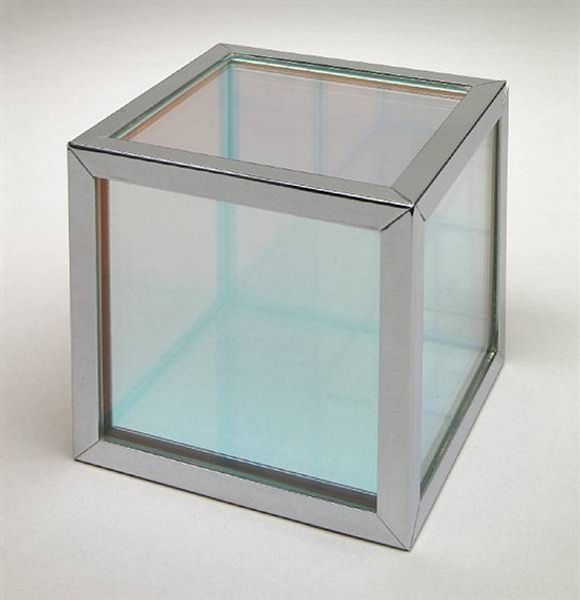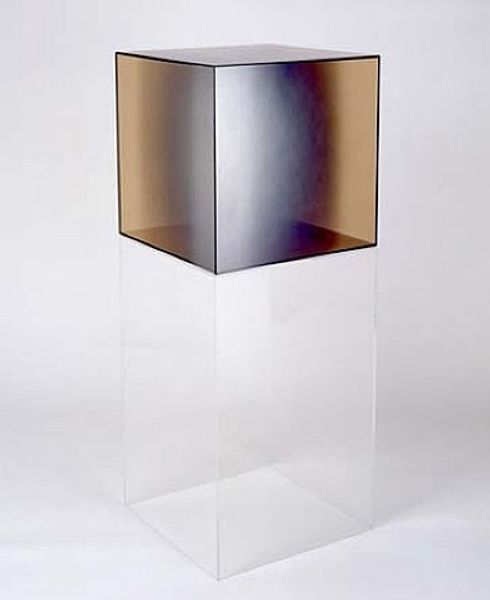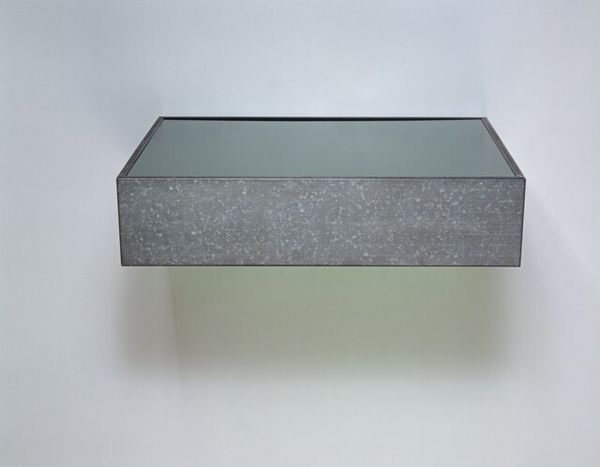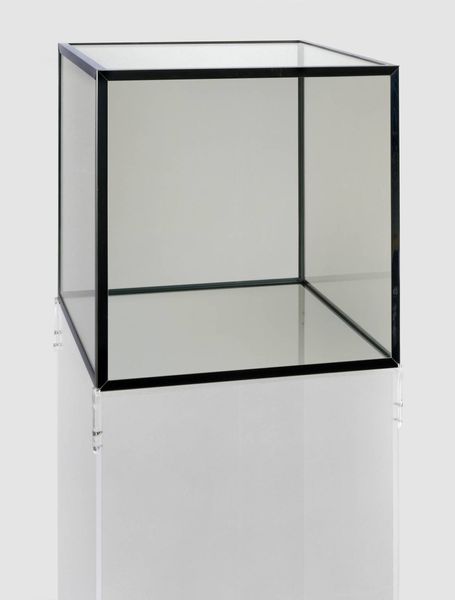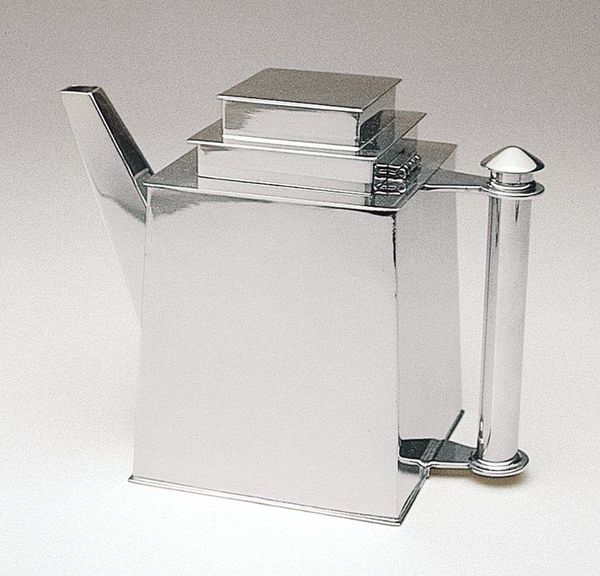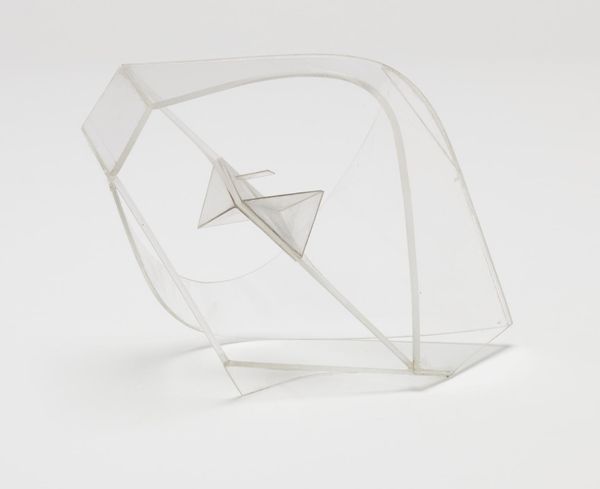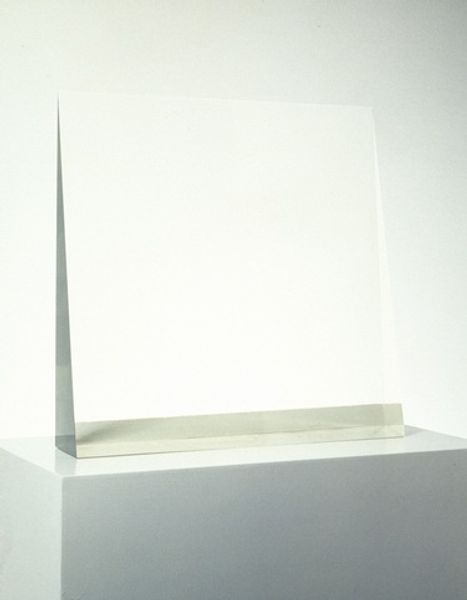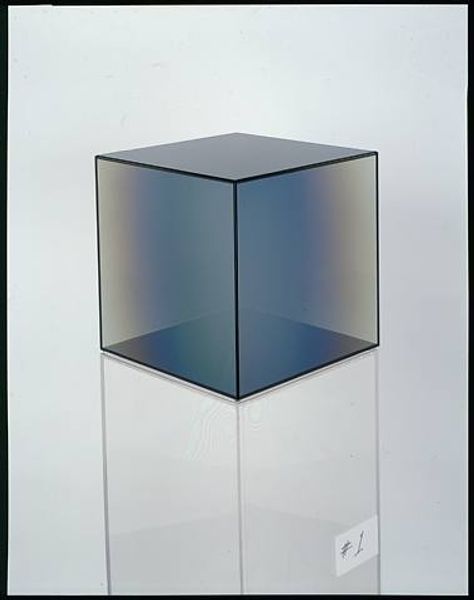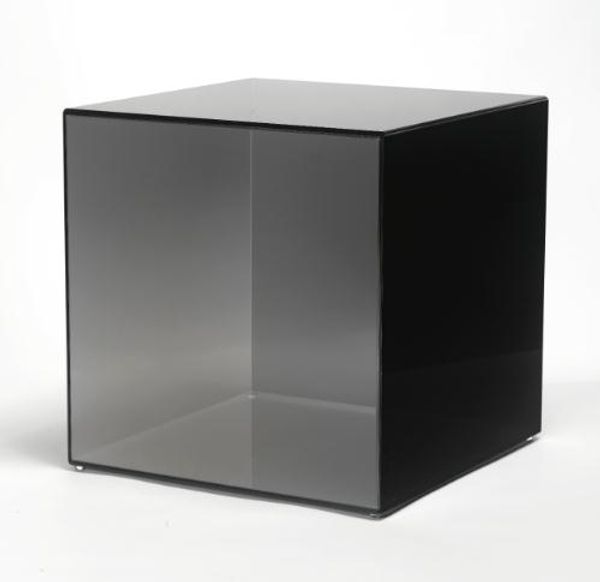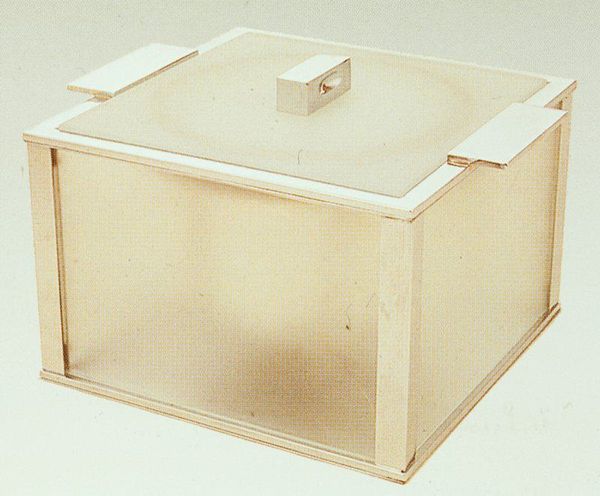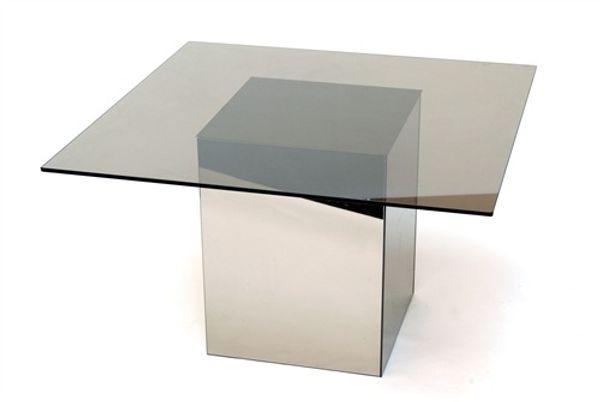
readymade, acrylic-paint, sculpture, installation-art
#
monochromatic
#
conceptual-art
#
minimalism
#
anti-art
#
readymade
#
acrylic-paint
#
abstract
#
form
#
geometric
#
sculpture
#
installation-art
#
modernism
Copyright: Yoko Ono,Fair Use
Curator: Here we have Yoko D'Holbachie's "Danger Box," created in 1966. It’s a readymade construction, predominantly acrylic. Quite stark, isn’t it? Editor: Strikingly sparse. The translucence of the material and the geometric regularity really command the eye. It's so cool in tone; a certain kind of cold detachment, perhaps? Curator: The choice of readymade and monochrome adheres to anti-art, Minimalism, and Conceptual Art movements that really sought to question and critique institutionalized value and access. This particular piece serves as an almost literal framing of a complex, gendered double bind. Editor: So, the “danger” isn’t inherent to the box, but reliant on outside interpretation and performative action? It looks almost… empty. I wonder what it's meant to contain? The bareness adds a curious charge to that warning label. Curator: Indeed. The “danger,” I’d argue, stems from patriarchal societal expectations placed on women – it’s a system, or “box,” in which their actions and very presence are policed and scrutinized. D'Holbachie encourages us to view how such a system produces the conditions it then purports to warn against. What a loaded word, management! Who controls the boundaries? Editor: Interesting. But considering purely the aesthetics of the object—the cold acrylic, the clear-cut geometry—is the social critique reliant on that textual warning? Even without the text, the sterile and minimal nature of this box lends itself to a reading of imposed boundaries. Curator: Well, the text is key to the social critique. It alludes to power dynamics that would be otherwise hidden through a purely formal reading, doesn't it? However, it must be said: Minimalism's hard edges were born of specific factory settings, work that certainly wasn't socially distributed equitably. It brings such realities to bare in our minds now. Editor: That certainly enriches the viewing experience for me. This interplay of the physical object and the socio-political text generates many threads for thought. Curator: For me too. Ultimately, D'Holbachie delivers a potent commentary about expectations and consequence. Editor: And it is articulated through deceptively straightforward geometry, I appreciate that tension.
Comments
No comments
Be the first to comment and join the conversation on the ultimate creative platform.
